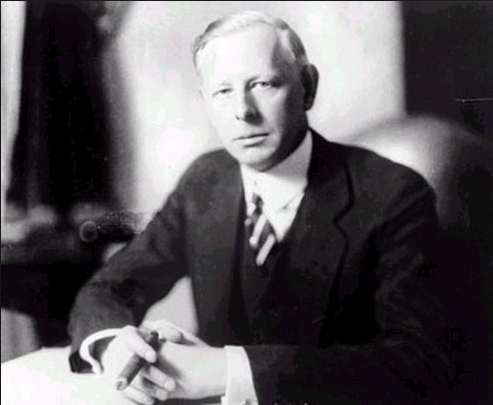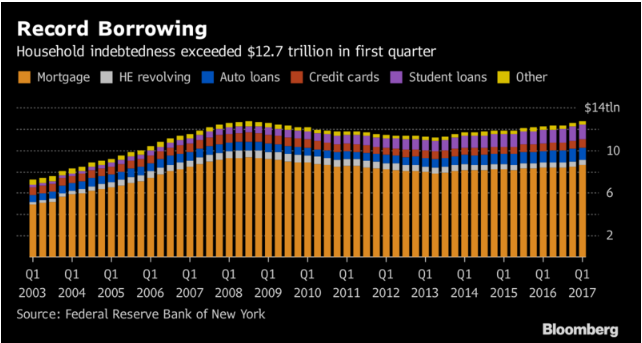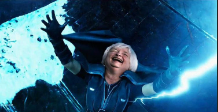The Boy Plunger: Triumph and Tragedy
The Trump rally, aided by the Fed’s monetary fuel has pushed the market into place, John Hussman says, the market has never gone before. “A few weeks ago,” he writes.
I observed that the price/revenue multiple of the S&P 500 had advanced to the highest point in history, outside of the March 2000 peak of the technology bubble. Moreover, unlike the 2000 valuation extreme, which was particularly concentrated in a single decile dominated by large-cap technology stocks, the current extreme has actually taken the median price/revenue multiple of S&P 500 component stocks more than 50% beyond the 2000 extreme.
If he were alive today, the great Jesse Livermore would, no doubt, be preparing as he did in 1929--to make a killing. Tom Rubython, in his outstanding book “Jesse Livermore-Boy Plunger: The Man Who Sold America Short in 1929” puts his finger on the source of the boom: “The seeds...were sown seven years earlier, 1921, when the Federal Reserve slashed its base interest rate from seven percent to four and a half per cent.” The new Fed had panicked with the drop in GDP from 1920 to 1921, “But many thought the rate reduction was really to boost the stock market which was at a low ebb,” Rubython writes.
Boost it did and in 1929 with the dollar backed by gold, the yellow metal flooded into America to speculate in shares. While those on Wall Street were collectively losing their heads, Livermore planned his “bear assault,” as the Bank of England kept transferring gold to New York.
Livermore and his traders ran through some trial runs during the months leading up to October. Today’s readers, used to Fed intervention at every turn will find some of the numbers shocking. One morning “overnight rates for borrowing money for margin trading had shot up to 20 per cent.”
Livermore, who began his trading career at age 15, skeptically quipped, “A get rich quick scheme is being played at an increasing breakneck speed across America. It is a new national sport that can be played for the price of an evening paper.”
By July, London had shipped $48 million in gold to the U.S., but the economy was going nowhere. The boom was only in the selling of shares, not goods and services. Livermore knew the end was near. He had already made and lost fortunes in speculation, officially declaring bankruptcy in 1915.
Rubython relates the often told story of Joe Kennedy shorting the market, after receiving stock tips from a shoeshine boy. Pat Bologna provided Kennedy a shine and a tip to “Buy oil and railroads They are going to hit the sky.”
Livermore was unusually gifted at math and took his first job at Paine Webber at age 14. He began trading the next year in what were known as “bucket shops.” No actual shares were exchanged at bucket shops, but bets were made on price movements. Livermore was able to foretell these moves by watching “the tape.” He quickly earned the nickname “The Boy Plunger” as he backed his bets with everything he had. He was so successful his business was not wanted.
By age 16, in 1893, Livermore had made what was then the considerable sum of $10,000. Seven years later he was broke and married.
In 1907, he was a millionaire and bought his first yacht, his short positions benefiting from the San Francisco earthquake. But the next year he was broke again and suffered lean years until filing his first bankruptcy.
He would again build a fortune, divorce and remarry, have two sons and build his dream home in Great Neck, New York. Livermore hired a staff of 60 and began trading in corn and wheat.
The Livermore household was shaken in 1927 when JL (as he was often called) and his wife Dorothy, still drunk from the night before, were robbed at gunpoint in their bedroom. “The gentlemen burglars” were charmed by Dorothy, who asked one of the robbers for a cigarette. He obliged and even provided a light. She “embarked on a civilized discussion about their chosen profession and the value of the jewels they were intent on stealing,” writes Rubython.
The year of the crash, transatlantic phone calls were $25 a minute. Livermore was spending thousands on calls each month to understand was was happening in London. When the Bank of England decided to hike interest rates and stem the tide of outflowing gold, JL was the first to know. He also learned prominent financier Clarence Hatry was in financial trouble.
With this news in September, combined with a scheduled speech by stock market forecaster Roger Babson,”Livermore decided to go short as much stock as he could sell before the speech went out.” Sure enough, Babson was bearish, and the rout was on. JL and his traders kept selling to the final bell.
As October came, Livermore slept on his couch in the office, not wanting to miss anything. He didn’t, his moment arrived. On Wednesday, October 23rd, the market lost 6 percent. The next day it lost 11 percent. On Friday the 25th the market steadied but “Livermore was certain that the market would fall on Monday and he was right.” Black Monday saw the market fall nearly 13 percent and Livermore kept selling. The market fell 15 percent at its worst on Tuesday and finally, JL bought back everything he had sold. He went home exhausted--$100 million richer. At 52 he was one of the wealthiest men in the world.
Rubython then chronicles a harrowing fall from grace, not just for JL, but the entire family, continuing into future generations. Other than a mention as Jesse Livermore III’s daughter, Tracey Lynn Livermore is not part of Rubython’s book but is as enigmatic as her famous great grandfather. She is none other than porn star, author, business woman, investor, swinging lifestyle advocate, and serial tweeter Brandi Love ®. In an industry full of good bodies porn actor James Dean tweeted that her’s is the best. I’ll leave it to the reader to research this. How good an investor? She claims (on twitter) to have made over 33 percent annual returns for the past five years.
She is a conservative, which is highly unusual in her industry, and a thoughtful writer. Ms. Love tweeted “My GG = JL 1 (The Great Bear), My GF = JL 2 (The Great Partier), My Dad = JL 3 (The Great Sadness).”
All three Jesse Livermores committed suicide in their 60s. JL 1 shot himself after a second bankruptcy and the realization that a fourth financial comeback was not forthcoming, as he was handcuffed by new government regulations. His third wife Harriet was wealthy from being made a widow four times, so Jesse’s material needs were satisfied, “But every time she helped, a little bit of Livermore’s soul went away.”
Both his son and grandson gassed themselves.
According to Wikipedia, the Livermore’s estate was worth $5 million. Rubython cites official records indicating he died bankrupt, but relates a story told by son Paul that on the night of his father’s death, Harriet left the house with shopping bags full of cash.
Either way, Jesse Livermore lived a life like no one else has, reaching spectacular highs and the deepest of lows. Rubython’s book is worth its price just for the frequent wise quotes from his subject. Now more than ever, with financial TV and the internet providing a constant stream of advise, speculators and investors should remember, “Markets are never wrong, opinions often are.” “Boy Plunger” chronicles a legend, and is a tribute to perseverance that we can all learn from as the stock market bubbles up again.






